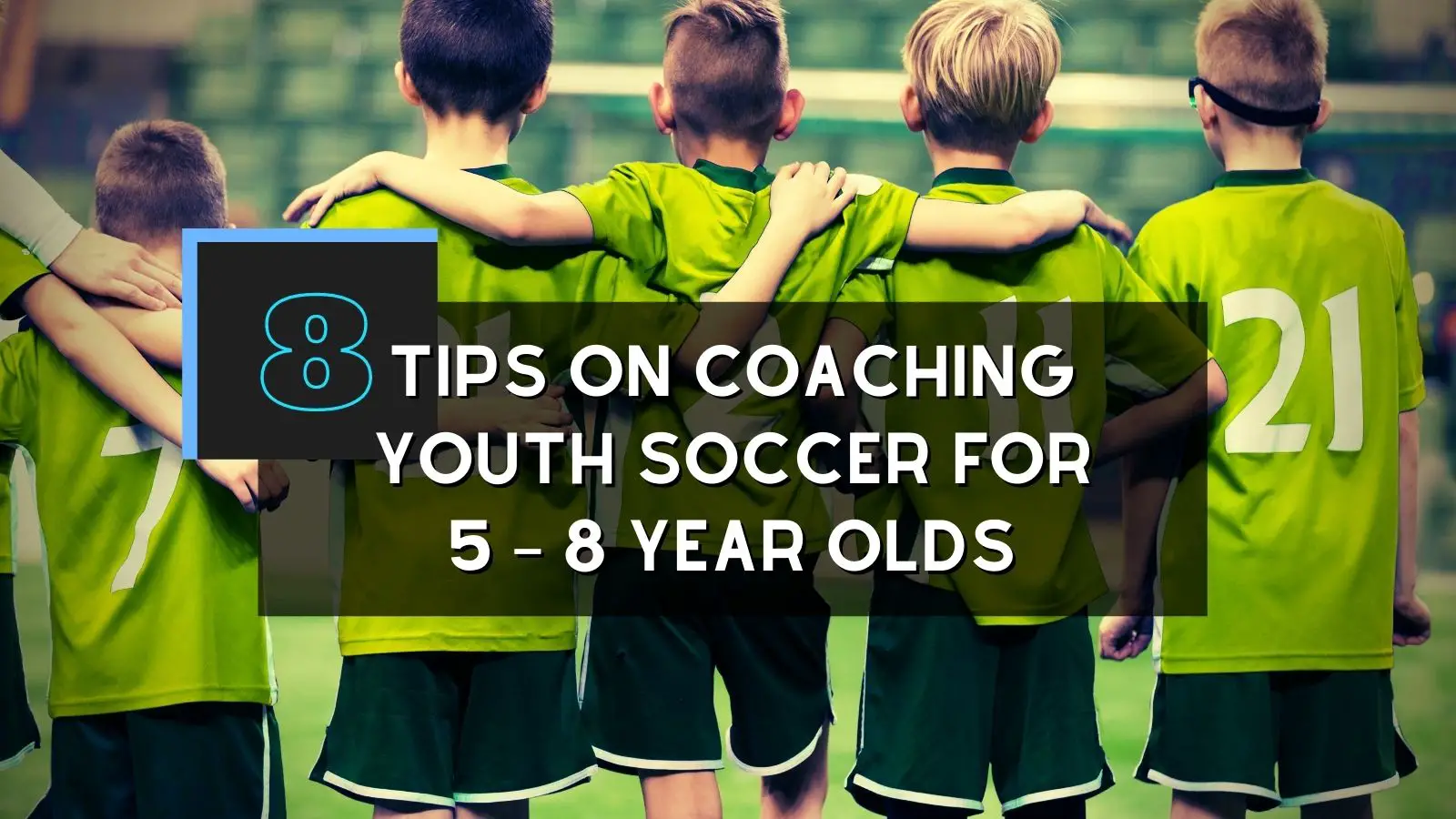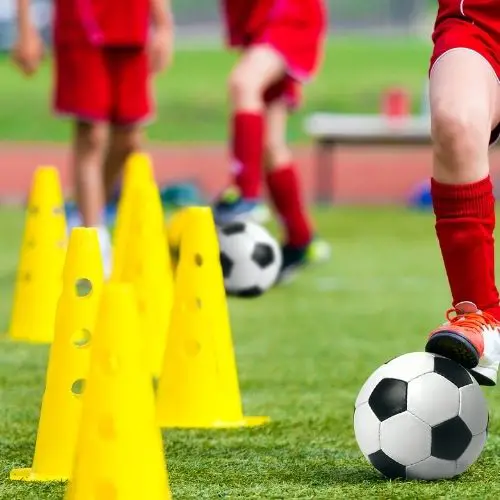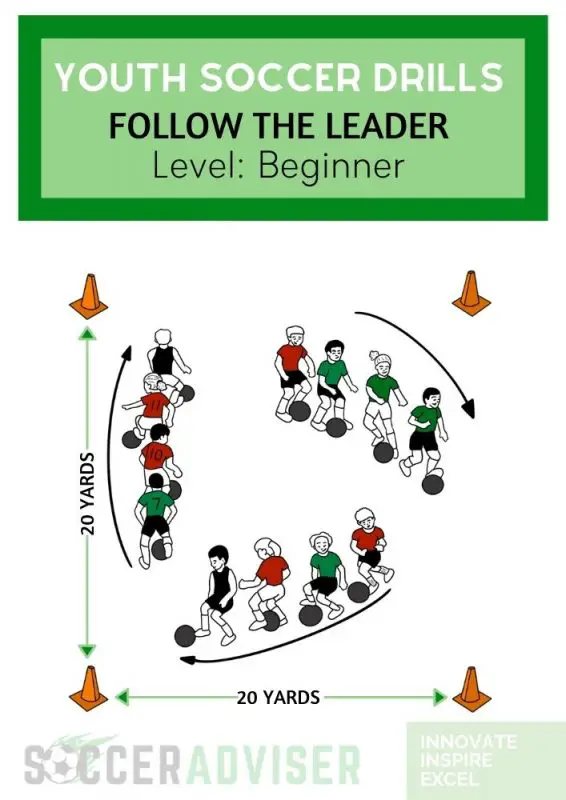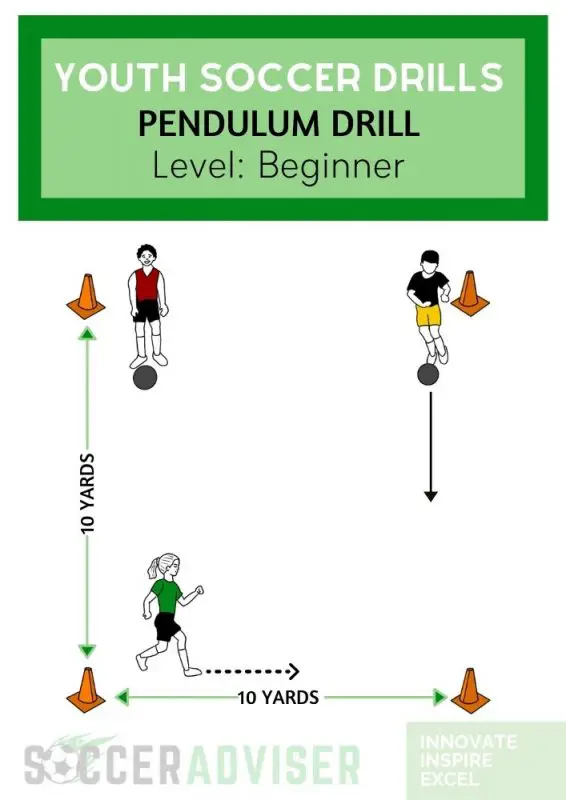8 Tips On How To Coach Soccer For 5 – 8 Year Olds

As an affiliate, we may earn from qualifying purchases. We get commissions for purchases made through links on this website. You can read more on our Affiliate Disclaimer here.
In this article I will discuss the basics of supporting and coaching children age 5 to 8 to play soccer. I will focus on a few physical exercises and drills but mainly training instructions for coaches and parents.
The following tips on how to coach soccer for 5 – 8 year olds can be implemented right away and will allow you to get the best out of your team, help them develop and also expose them to the fun and exciting world of soccer!
1) Know Your Players
To successfully coach u5 – u8 soccer, you must first familiarize yourself with their personalities and levels of skills whilst understanding each player’s strengths and weaknesses.
This will take a few practise sessions and conversations so do not worry if you do not know this all right away.
Remember that each child becomes motivated by different factors; some may always seem enthusiastic and ready to go, others might be driven by whole-team activity and others might need a little more one-to-one attention.
Coaches who take the time to understand their players know the effort necessary to support players to a level that encourages them to shine on their skill sets.
Also, coaches must analyze the interaction between players in their teams to understand who each player likes working with and who plays well together.
2) Use Shorter Drills
As a coach, you need to know that you require patience when coaching soccer players in this age group. Their attention span is shorter than older soccer players.
Also, players in this age group require extra coaching to maintain their attention on soccer. Therefore, couches ought to create shorter drills to encourage better focus and ensure that the time they stand as they wait to play is very short.
Otherwise, you might lose your players’ attention and limit the benefits of the drills being couched.
3) Keep Games Small
It is advisable to put your players into small groups of no more than a few players so that you can easily manage them. This way, the children can also get more touches of the ball and the opportunity to have more fun when playing.
Try to get some parents to volunteer to help out with the kids as you focus on coaching them.

4) Buy Basic Soccer Equipment

Youth soccer coaches should invest in basic soccer equipment so that kids don’t have long queues waiting to take their turn.
While it sounds obvious, some coaches don’t have enough balls for their players. Create a few simple activities for the kids and optimize time on task to avoid lengthy explanations and getting bored.
Trying to coach U8 years to play various positions is a long-term process. A lot of the children want to be strikers or goalkeepers; therefore, switch them around so they all get to try different positions.
5) The Right Size Soccer Ball For Their Age
I have touched on this point several times before. Choosing the most appropriate sized ball for a child’s age and size often overlooked but very important. Double-check our soccer ball size chart to ensure you are using the correct ball size for your age group.
6) Encouragement Over Supremacy
One of the greatest tips for coaching children under the age of eight is to encourage them. Make the young soccer players feel that they are performing positively to enjoy soccer and ultimately become successful.
Knowing how to give constructive criticism when you address inadequacies in the kid’s game prevents the players from feeling hurt and encourages them to work harder to correct the soccer game’s deficiencies.
Your demeanor also sets the tone for how the children view soccer as enjoyable or a game that they are being forced to tolerate.
7) Have Fun
Soccer is a game, and it is made to be a joyous occasion for players. It can also be fun for you. Embrace the fact that you are sacrificing your efforts to make a positive impact on the young kids.
Coaching kids under the age of eight can be a challenge to you but focus on soccer’s fun so that you can give your best and succeed.
8) Leave A Lasting Impact
Remember to learn the game, get better outside of training, use good hearing skills, create special moments and remember that youth players will play football for the rest of their lives, so above all you have made sure that it is a positive experience.
The best football coaches create an environment where players come enthusiastically to training, competition and learning.
It is important to learn again and again, to admit weaknesses and to present yourself a little better as a coach in every training and game.
3 Basic & Fun Soccer Drills For 5-8 Year Olds (U5, U6, U7, U8)
For the purpose of this post, these soccer drills are for your targeted group of 5 to 8 years olds. However, these are general basic soccer drills for beginners and, as such, can be used for players of all ages who are considered to be beginners.
You can find many of these youth soccer drills and more in this book.
1. Follow The Leader
The purpose of the Follow The Leader Drill, is to help refine dribbling skills while adapting space with no defensive pressure. This is a Beginner to Advanced-Beginner drill.
Training Equipment Required:
1 Soccer Ball per player, 4 Cones
Duration:
5 mins

How To Perform This Drill
- Four or five players divide into lines in a 20-by-20-yard grid (see image).
- The player first in line leads and moves through the grid first, followed by the rest of the players while dribbling their balls.
- When you give the signal, the person in the back pushes his ball out a few yards in front of the leader, sprints after it, and becomes the new leader.
- When your next signal is given, the new last person repeats this action.
![]() TIP: Encourage ball control by discussing how the ball is touched by various parts of the foot. The general space provided should be used properly so that players do not encroach on each other’s space. Once the players have mastered this drill, let them do it independently without your direction.
TIP: Encourage ball control by discussing how the ball is touched by various parts of the foot. The general space provided should be used properly so that players do not encroach on each other’s space. Once the players have mastered this drill, let them do it independently without your direction.
2. Pendulum Drill
The Pendulum Drill is a more advanced-beginner youth soccer drill, used to develop a player’s passing accuracy and collection skills. This is done from a stationary passer to a moving target and has no defensive pressure.
Training Equipment Required:
2 Soccer Balls, 4 Cones per 3 players.
Duration:
10 mins

How To Perform This Drill
- Arrange three players on a 10-yard grid.
- Two players stand to one side of the grid, each has a ball.
- A third player is on the opposing side.
- In the unoccupied corner, the player who doesn’t have the ball moves.
- The player on that side passes the ball to her as she moves.
- After collecting the ball and returning it to the player who passed it to her, she then runs to the corner she just left to receive a pass from the other player.
- Players repeat this back-and-forth action for one minute and then switch roles.
- Once players improve their skills, they can play the pendulum game by counting the passes they make per minute.
![]() TIP: Talk to the players about how the amount of force the passer should use to pass the ball to the receiving player affects how much the pass must be led.
TIP: Talk to the players about how the amount of force the passer should use to pass the ball to the receiving player affects how much the pass must be led.
3. Freeze Drill
The Freeze Drill aims to improve dribbling abilities while negotiating space with no defensive pressure.
Training Equipment Required:
1 Soccer Ball per player, 4 Cones
Duration:
10 mins

How To Perform This Drill
- Set up a 20-by-20 yard grid and spread players out.
- The players move freely, each with a ball (see image).
- Use your whistle to signal players. Once you blow the whistle, players must freeze by bringing their balls to a complete halt.
- You can try other variations of this drill. Some could include touching the ball with other body parts, freezing while touching the ball with more than one part of the body, or freezing at various levels.
![]() TIP: The exercise allows players to develop their own strategies while negotiating without defensive pressure. Encourage them to use their nondominant foot. Freezing at different stages might incorporate straight-legged, crouching, or kneeling positions.
TIP: The exercise allows players to develop their own strategies while negotiating without defensive pressure. Encourage them to use their nondominant foot. Freezing at different stages might incorporate straight-legged, crouching, or kneeling positions.


